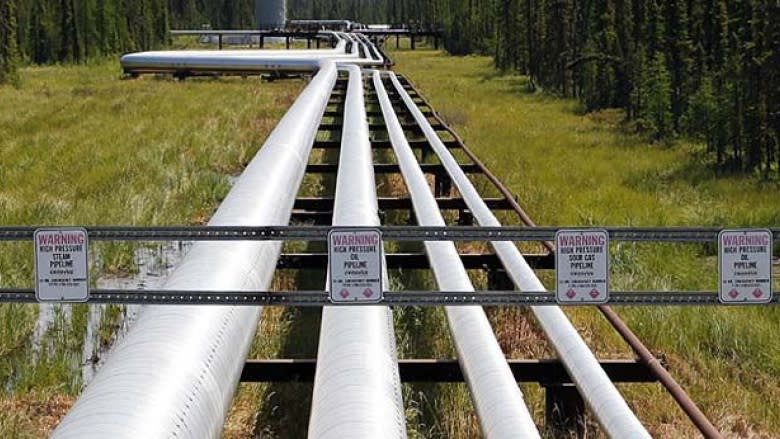Parts of TransCanada pipeline network made of potentially substandard material: documents
Documents from TransCanada and obtained by Radio-Canada's investigative program Enquête reveal the company's pipeline network, including a stretch that would be used to transport oil if the Energy East project goes ahead, comprises more than 1,000 fittings possibly made of substandard material.
The National Energy Board (NEB) has known since 2008 that some elbows and steel fittings installed in Canadian pipelines are too thin and therefore less resistant to rupture, but the regulator only issued a safety notice about the problem in February.
- Energy East Pipeline hearings protest peeves Natural Resources minister
TransCanada spokesperson Mark Cooper said the fittings the company uses meet required thickness.
However, the NEB's notice said existing industry accepted standards appear to be "insufficient" and that individual companies should create their own enhanced standards.
Cooper insists TransCanada goes beyond the requirements and that its fittings are thicker than they need to be.
Listing potentially problematic pipe fittings
The NEB required companies under its jurisdiction to provide a list indicating the locations of all potentially problematic fittings.
The substandard fittings were traced to manufacturer Canadoil Asia with production originating from Thailand.
TransCanada provided a list of all its fittings and elbows made by Canadoil Asia in Thailand. More than 1,200 fittings are part of the Keystone pipeline project and another 225 are part of its natural gas network, including 30 in the stretch that ends in Les Cèdres, Que. west of Montreal.
Another affected section, in North Bay, Ont., will be converted to transport oil if the Energy East project goes ahead.
"In no way did the list we provided suggest the fittings were defective," said Cooper.
Same issue led to Alberta pipeline break
In a written statement, TransCanada said it conducted a comprehensive technical assessment of its network "after discovering that some fittings supplied by manufacturers were weaker than those we had ordered." The company emphasized it took these steps before the official directive was issued and ensures that its networks "operate safely."
A Transportation Safety Board report and an NEB audit into a 2013 incident in Buffalo Creek, Alta., where a pipeline transporting natural gas ruptured, confirmed the elbow where the failure the break originated contained substandard materials.
An estimated 16.5 million cubic metres of natural gas were released, but the rupture did not result in a fire, no one was injured and no buildings had to be evacuated.
That pipe fitting was made by a different company, EZEflow, which has since made improvements to both its manufacturing procedures and its quality assurance programs.
Engineer Evan Vokes basically predicted that kind of accident would happen. He was fired from TransCanada in 2012 after publicly denouncing what he said were significant shortcomings in the company's practices.
He said he repeatedly witnessed inferior parts being installed while working for TransCanada. His concerns were later validated by an NEB audit.
Some fittings were re-covered as a precaution, but Vokes is concerned that's not enough.
"The thing is, they haven't restored the fundamental material property of toughness, which stops the cracks from growing and exploding," he said in an interview.
NEB hearings on the Energy East project were to take place in Montreal on Monday, but were cancelled for the day after protesters disrupted the proceedings.
- ANALYSIS: National Energy Board fights to restore legitimacy as Quebec hearings begin
Correction : A previous version of this story stated more than 1,200 fittings in the Keystone pipeline and 225 in its natural gas network don't meet the NEB requirements. In fact, it is only a possibility those fittings are substandard.(Aug 29, 2016 3:11 PM)



